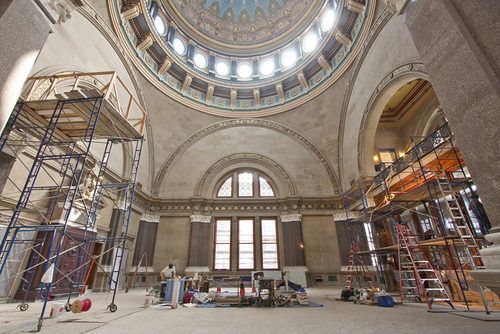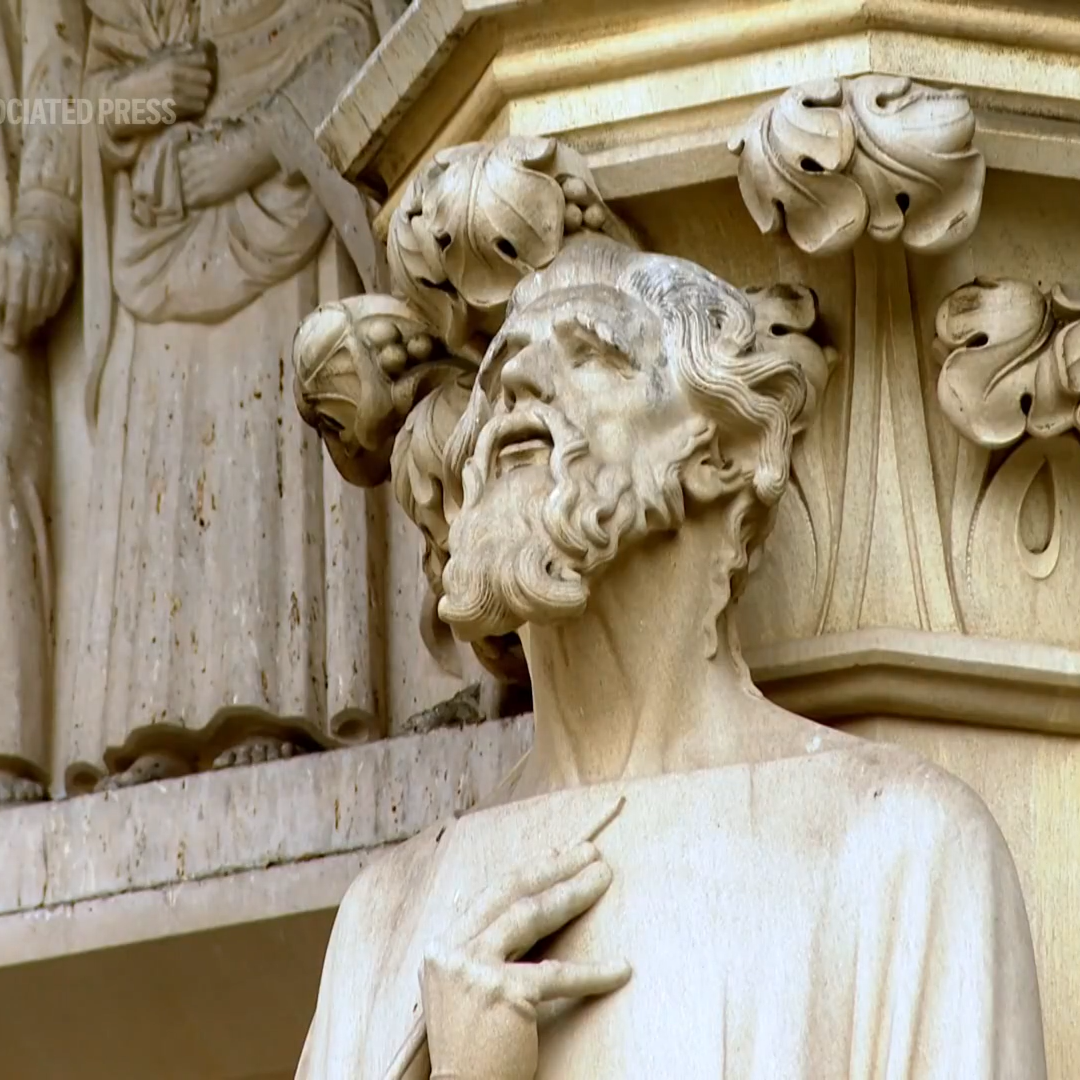Jeremiah Budin reports for Curbed.











When Brooklyn hostel owner Juan Figueroa purchased the Williamsburgh Savings Bank for $4.5 million in 2010, the rumor was that he planned to convert the historic bank building into a hotel. That would have been difficult, though, since the structure is an exterior, interior, and national landmark. The actual plan, it turned out, was to meticulously restore it and turn it into an event space and banquet hall, and place a 40-story hotel right next door.
Now, after two and a half years and an additional $18.5 million of work, the restoration part of the project is nearing completion (the hotel is still in the process of looking for funding), and we got inside to take some pictures of the transformed space.
According to Carlos Perez San Martin, Figueroa’s cousin and the project manager, the bank was a complete wreck before the restoration began. The oculus skylight from the 6,500-square-foot main room had been in storage for 75 years and was in a state of complete disrepair. Three quarters of the mosaic marble flooring was missing or unsalvageable. Walls were covered with multiple layers of white paint, the woodwork with a sickly shade of green, and the intricate mural on the inside of one of the two domes—one of the last known murals by architect/designer Peter B. White—was so covered in dirt that parts of it appeared black.
Two complete original elements are the Napoleon III-era bank vault door, with a coin bearing the face of the first French president embedded in the center, and the Otis bird-cage elevator, one of only three remaining in New York City.
Replacing all of the building’s mechanicals was another huge undertaking. The space will be heated by four miles of serpentine tubing below the floor, and cooled by around 20 room-sized AC units in the basement. The lower level, which currently houses a woodworking studio for the restoration team, is slated to become a gallery for local artists at some point down the road—but not when the event space opens late this year or early next year. They’re also renaming the building Weylin B. Seymor, for some weird reason.





































